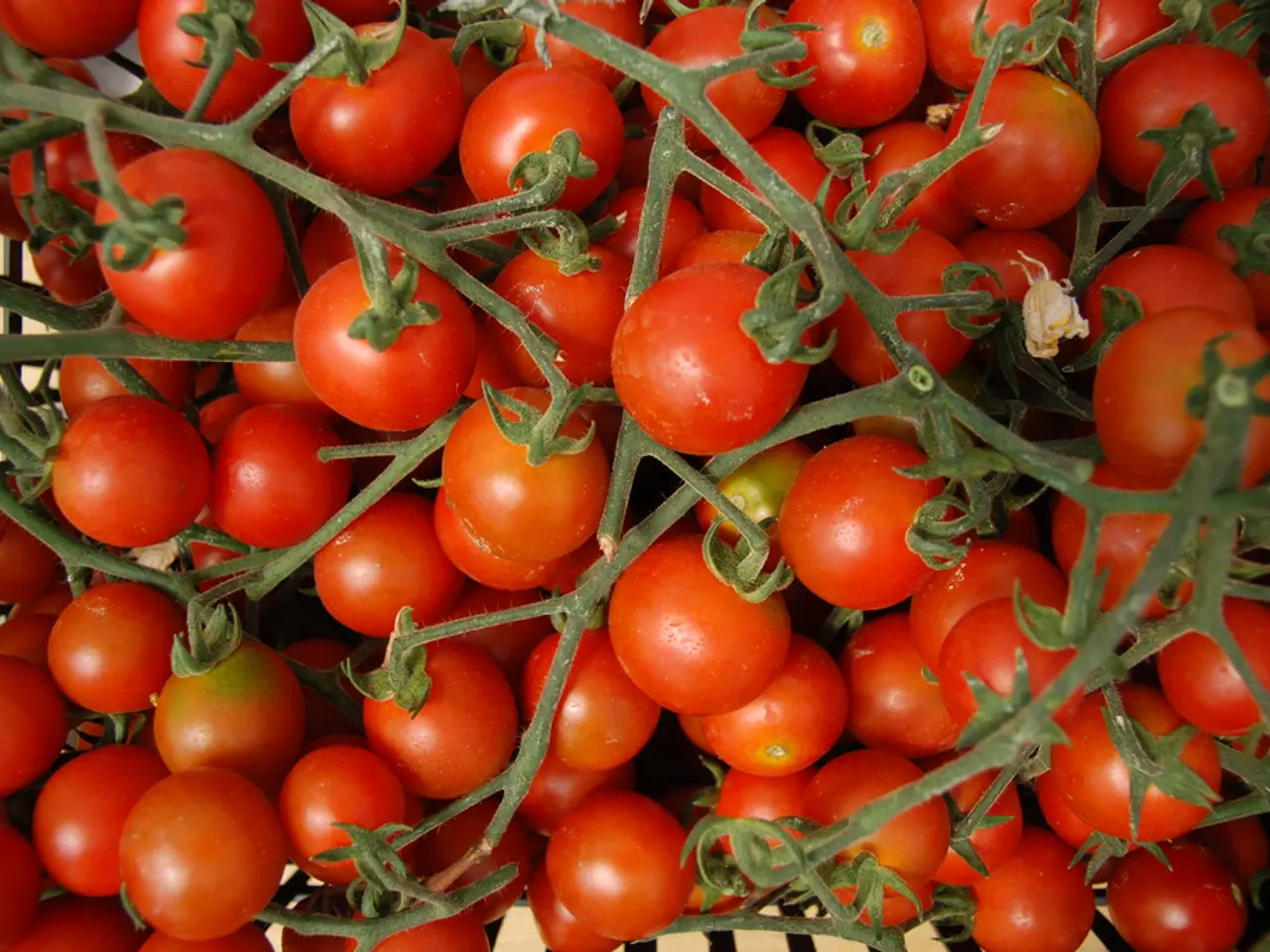Tomatoes and another plant cross-bred approximately 9 million years ago, leading to the creation of potatoes.
In the vast expanse of time, around 9 million years ago, a significant event took place in the natural world. This event, a natural interbreeding (hybridization) between the wild ancestors of modern tomatoes, known as the Tomato lineage, and a closely related group of potato-like plants called Etuberosum, marked the beginning of a new lineage: Petota.
This hybridization was a turning point, as it led to the development of a novel trait - tubers. Absent in the ancestral tomato and Etuberosum lineages, these swollen underground storage organs provided an adaptive advantage, enabling survival in harsh environments and promoting species diversification within the Petota lineage. This process is what underlies the rich diversity and ecological success of potatoes today.
The Tomato lineage consists of 17 living species, including the salad essential Solanum lycopersicum. On the other hand, the Etuberosum lineage has three living species native to South America. Notably, neither of these lineages has developed tubers since the hybridization that produced the Petota lineage.
Advanced genomic tools were used in the research, which were not previously available. The researchers analyzed the genomes of 128 Petota, Tomato, and Etuberosum plants to resolve the evolutionary relationships between these lineages. The analysis revealed "mosaic-like" genetic patterns in Petota, representing an even mix of DNA inherited from both Tomato and Etuberosum.
One of the key genes identified in the formation of tubers was IT1, which originated from the Etuberosum side. Another significant gene, SP6A, originated from the Tomato lineage and evolved to instruct when to make tubers.
The Andes mountains were undergoing rapid uplift at the time when potato plants began to conquer new soil. The production of tubers allowed potato plants to expand into the newly created cold, dry habitats in the rising Andes mountain chain. This geographical expansion was promoted by the potato plants' ability to survive in harsher environments, which also prevented mating with Etuberosum and Tomato plants, allowing Petota to evolve into a completely new lineage.
The Petota lineage, which includes cultivated potatoes, emerged from interbreeding between the ancestors of the Tomato and Etuberosum lineages. The evolution of tubers in potatoes provided a huge advantage in harsh environments, leading to an explosion of new species and contributing to the rich diversity of potatoes today.
The team published its findings in the prestigious journal Cell on July 31, shedding new light on the evolutionary history of potatoes and highlighting the importance of hybridization in the development of new species.
[1] Genome Sequencing of Potato and Its Wild Relatives Reveals the Origin of the Cultivated Potato and the Evolutionary History of the Solanum Genus [2] The Potato Genome Provides Insights into the Evolution of Plant Domestication Syndromes [3] The Potato Genome Unravels the Evolutionary History of the Solanum Genus [4] The Potato Genome Sequence and its Implications for Crop Improvement and Biology
By understanding the evolutionary history of potatoes, we can gain insights into the processes that have shaped the diversity of plant life on our planet. This research not only provides a fascinating look into the past but also offers potential avenues for future crop improvement and sustainability.
- In the realm of scientific discovery, the hybridization betweentomatoes and Etuberosum 9 million years ago marked the beginning of the Petota lineage, with tubers as a novel trait that aided survival.
- As the Tomato and Etuberosum lineages have not developed tubers since the hybridization, this event highlights the impact of hybridization in the development of new traits.
- The advancements in genomic tools enabled researchers to analyze the genomes of various Petota, Tomato, and Etuberosum plants, revealing "mosaic-like" genetic patterns in Petota.
- The evolution of tubers in potatoes, driven by genes like IT1 from Etuberosum and SP6A from the Tomato lineage, played a significant role in business, as this adaptation allowed potatoes to expand into new environments and industries.
- In personal-finance and education-and-self-development, this study demonstrates the value of learning and skills-training in uncovering solutions to complex problems, contributing to career-development opportunities.
- Data-and-cloud-computing was crucial in managing and analyzing the large volumes of data generated during the research, showing its importance in various industries, including environmental-science and technology.
- By shedding light on the origins of potatoes and their evolutionary history, this research contributes to the food-and-drink industry by offering insights into crop improvement and sustainability, playing a part in finance through potential investing opportunities in the agricultural sector.




